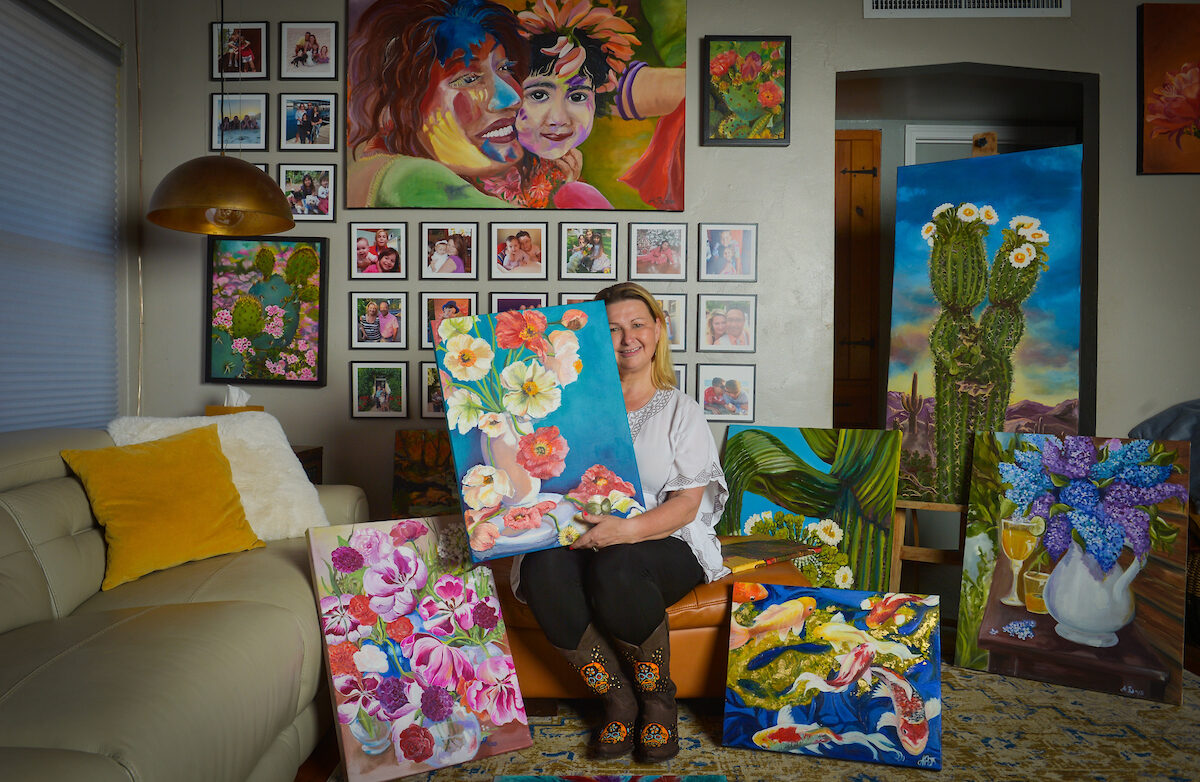
Another Evening Song
Another Evening Song is inspired by the beautiful songs of the coyote reuniting with their partner. If you look closely, you will find all sorts of playful surprises in the papers that were used to create this piece. I love the silhouettes of the coyotes emphasized by the bright moon, and the playful saguaro.






























































